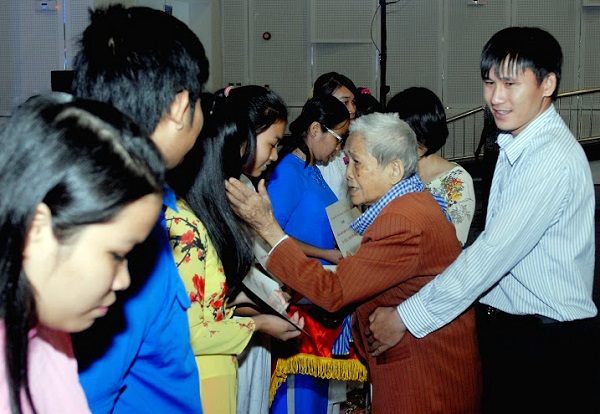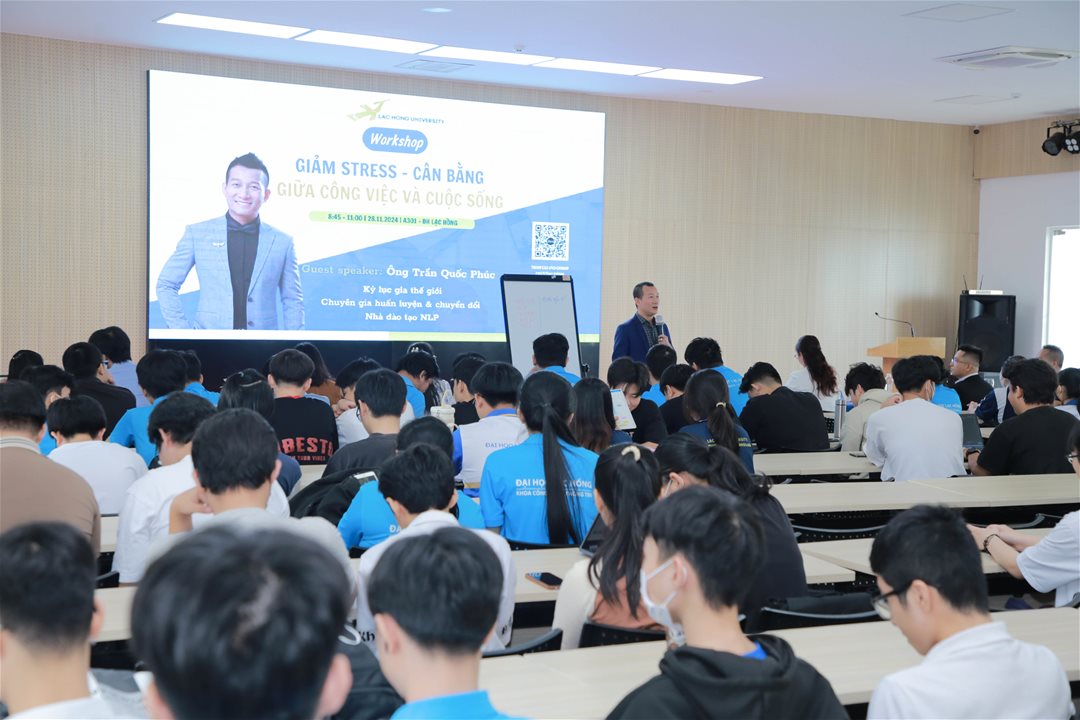Strategic Area
Curriculum
CONTENTS
Bottom financial quintile student support
I. Introduction
Challenge: Recognizing that severe financial hardship is the greatest barrier preventing a portion of potential students from accessing higher education.
Commitment: Providing opportunities for individuals who may not be able to afford university education due to serious financial difficulties.
1. Beneficiaries:
Our target group includes students from the bottom 15% of household income group in the country, identified through official certification as low-income or poor households by local authorities or their high schools.
2. Principles of Implementation:
This commitment is carried out through long-term objectives that enhance applicants’ competitiveness and readiness, while strictly prohibiting any form of discrimination at both the initial and final stages of admission.
II. Bottom financial quintile admission target
Long-Term, Measurable Targets: The University's long-term objectives and measurements are designed to enhance fair competitiveness and secure university admission opportunities for candidates who face serious financial disadvantages that prevent them from attending higher education, while strictly prohibiting discrimination at the point of admission. These targets ensure our efforts are systematic, measurable, and aligned with our commitment to equity education.

Key Performance Indicators (KPIs)
Activities
Access & Preparation
Increase the number of students from the target group participating in the University's Pipeline Programs (which are designed to build academic capacity and essential skills for high school students from under-resourced schools and communities) by 89% over the next 5 years.
1. Academic Capacity Building
Specialized Academic Workshops: Organizing intensive study sessions for core subjects (e.g., Math, Science, Languages) held at target high schools or on the university campus to address academic attainment gaps.
Essential Skills Development Courses: Focusing on foundational university-readiness skills, such as critical thinking, research methodology, academic essay writing, and effective time management.
2. Personal Support & Guidance
E-Mentoring Programs: Establishing a dedicated mentorship network that connects current university students (especially those from similar backgrounds) with high school students to provide academic support, personal guidance, and share university life experiences.
Admissions and Financial Aid Advising: Offering in-depth consultation on the standard admissions process, application strategy, and supporting the preparation of required application materials, including personal essays and financial aid documentation.
3. Aspiration & Experience
Campus Tours and Residential Stays: Organizing visits or short residential programs (e.g., summer schools) for high school students to directly experience the university environment and facilities.
Off-Campus Talks and Presentations: Conducting motivational talks at target high schools and community centres about higher education opportunities, career pathways, and the value of a university degree.
4. Contextual Equity & Information
Parents and Community Consultation Sessions: Providing structured information and guidance to parents/guardians about higher education options, associated costs, and available financial support mechanisms to mitigate informational barriers.
Equality, Diversity, and Inclusion (EDI) Workshops: Providing specific modules or facilitated discussions to build social awareness and skills, helping students adapt and thrive in a diverse university environment.
Competitive Support
Achieve an 81% success rate for students participating in Pipeline Programs who successfully apply and gain admission through the standard admissions process.
The measurement activities below are essential for quantifying the effectiveness of the long-term pipeline programs:
1. Hard Outcomes (Admissions & Enrolment)
Application Rate Tracking: Monitoring the number of students who participated in the Pipeline Program and formally submitted an application to any university course.
Offer Rate Tracking: Documenting the number of participating students who received an offer of admission from the university through the standard admission process.
Admission Rate: Tracking the number of students who accepted the offer and formally enrolled at the university.
Contextual Verification (Target Group): Utilizing contextual data (e.g., home postcode area, refugee/asylum seeker status, or specific low-income documentation) to verify that admitted students are indeed part of the target group
2. Soft/Intermediate Outcomes (Capacity & Readiness)
Knowledge and Expectation Assessment: Conducting Pre-camp/Post-camp surveys to evaluate changes in: Higher Education (HE) knowledge, HE expectations, and academic self-efficacy.
College Readiness Assessment: Evaluating student perceptions of preparation needs (e.g., "I know which classes I have to take before college")
Soft Skills and Social Mobility Outcomes: Monitoring improvements in communication skills, leadership, and community integration (often tracked through academic advisor assessments or post-program self-evaluation).
Outreach and Career Guidance
Achieve a 92% participation rate for high school students from underprivileged wards/districts and poor provinces in the country, engaging in admission consultation and career guidance programs (online or in-person at LHU and at high schools).
Admission consultation
Career guidance programs
Targeted Financial Commitment
Commit to allocating a minimum of 1.0% of the overall scholarship budget to eligible students belonging to the Bottom Financial Quintile (20% lowest income group), primarily through scholarships designated for poverty-stricken areas from "New Student Scholarship Budget"
1. Direct Allocation and Reporting: This involves the issuance of official decisions by the University for budget commitment.
2. Data Collection and Impact Verification: Statistics on the number of new students
Targeted Scholarship Distribution (New Student Scholarship Budget)
The University has consistently exceeded the minimum 1.0% allocation commitment, demonstrating scalable support:
Year
% of New Student Scholarship Budget Allocated to Bottom Financial Quintile
2023
1.13%
2024
4.9%
2025
6.17%
Collaborative and Endowed Financial Support Initiatives
In addition to the budget allocation, the University has established comprehensive, long-term programs:
-
“Supporting Students to School” Scholarship (Học bổng “Tiếp sức đến trường”): The University coordinates this annual scholarship program with the Tuoi Tre Newspaper, the Ho Chi Minh Communist Youth Union, and the Vietnam Students' Association. The scholarship targets eligible students from disadvantaged backgrounds who are required to submit an essay clearly outlining their aspirations and future career goals as part of the application process.
-
“LHU Students Overcoming Hardship” Scholarship Fund: On November 16, 2024, LHU collaborated with the local business community to establish this fund. The initiative provides an institutional mechanism for enduring financial support, offering comprehensive relief to students facing severe economic difficulties.
III. Bottom financial quintile student success
Graduation targets for students who fall into the bottom 15% of household income group in the country
As a benchmark for our commitment, the University's overall graduation rate for all programs was 81.46% in 2023 and 87.80% in 2024.
To ensure outcome equity for students from disadvantaged backgrounds, we officially commit to achieving a graduation rate of 87.5% for students belonging to the bottom financial quintile by the 2029 academic year. This target is aimed at reducing the attainment gap between this group and the University's overall student body to less than 1.0 percentage point.
IV. Bottom financial quintile student support programmes
The following specific programmes and initiatives demonstrate the University's continuous, targeted, and coordinated approach to assisting students from the Bottom Financial Quintile to successfully complete their studies
1. Financial aid
The University provides annual, need-based financial packages designed to mitigate dropout risk by addressing serious financial disadvantages.

a. Non-Repayable Scholarships: Provision of annual need-based scholarships and bursaries that are re-funded throughout the course of study. These grants are categorically non-repayable
Scholarship Types Include:
-
Type 1: Region-based Scholarships (allocated from the retention scholarship budget for students achieving good/excellent academic results).
-
Type 2: Nguyen Van Ky Scholarship.
-
Type 3: Corporate/Enterprise Scholarships.
-

b. Emergency Grants: Provision of immediate financial assistance to address unforeseen circumstances such as health issues or natural disasters.
-
c. Student Loans (Low-Interest/Non-Commercial):
-
- Mabuchi Enterprise Loan Program: Students repay the borrowed tuition funds monthly (or in one lump sum) after graduation (Zero interest rate).
-
- Student Credit Loans: Access to student credit financing with preferential interest rates and favorable terms.
-
d. Work-Study Support: Employment as assistants in University Units, Faculty Offices, or on-campus centers, allowing students to earn money to cover study costs. Employment is strictly conditional on demonstrated financial need and must not affect eligibility for other financial aid.
e. Study & Living Expense Support:
-
Provision of vouchers for study-related expenses (e.g., stationery and computers)
-
Reduced dormitory costs.
-
Provision of complimentary tickets or transportation services for returning home during holidays (Tet/Lunar New Year).
-
f. External Funding Initiatives: Partnerships to secure sustainable financial resources, including the "Students Overcoming Hardship" Scholarship Fund (Enterprise-sponsored) and the Tam Tai Viet Fund.
-

2. Academic and Retention Support
-
These programmes aim to improve academic performance and retention rates for at-risk students:
-

a. Targeted 24/7 Tutoring Programs: Provision of continuous 24/7 tutoring programs by academic advisors and teaching assistants (TAs), targeting students at risk of failure in difficult modules, especially during the early years of study.
-
b. Skills Workshops and Counseling: Offering workshops and one-on-one counseling on essential study skills (e.g., academic writing and research skills) to ensure students successfully adapt to university requirements.
3. Welfare and Psychological Support
These services promote the quality of life (QoL) and mental health, addressing non-academic barriers to completion:
-
a. Psychological Counseling: Providing free and accessible psychological counseling services designed to address the stress and minor mental disorders (MMD) commonly associated with financial hardship and low socio-economic status.
-
b. Non-Financial Support Initiatives: Provision of food vouchers at preferential or subsidized costs to address basic nutritional needs, falling under support for food/living expenses.

